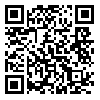Volume 23, Issue 2 (summer 2017)
Back to this Issue |
Back to browse issues page
Download citation:
BibTeX | RIS | EndNote | Medlars | ProCite | Reference Manager | RefWorks
Send citation to:



BibTeX | RIS | EndNote | Medlars | ProCite | Reference Manager | RefWorks
Send citation to:
Tasavori M, Mazloum S R, Froutan R. Effect of local heating on the success rate of venipuncture in the patients with overweight: a randomized clinical trial
. Journal of Hayat 2017; 23 (2) :173-184
URL: http://hayat.tums.ac.ir/article-1-1886-en.html
URL: http://hayat.tums.ac.ir/article-1-1886-en.html
1- MSc. in Nursing, School of Nursing and Midwifery, Mashhad University of Medical Sciences, Mashhad, Iran
2- Instructor, Dept. of Medical Surgical Nursing, School of Nursing and Midwifery, Mashhad University of Medical Sciences, Mashhad, Iran; Member of Evidence Based Care Research Center, Mashhad University of Medical Sciences, Mashhad, Iran ,mazlomr@mums.ac.ir
3- Assistant Professor, Dept. of Medical Surgical Nursing, School of Nursing and Midwifery, Mashhad University of Medical Sciences, Mashhad, Iran
2- Instructor, Dept. of Medical Surgical Nursing, School of Nursing and Midwifery, Mashhad University of Medical Sciences, Mashhad, Iran; Member of Evidence Based Care Research Center, Mashhad University of Medical Sciences, Mashhad, Iran ,
3- Assistant Professor, Dept. of Medical Surgical Nursing, School of Nursing and Midwifery, Mashhad University of Medical Sciences, Mashhad, Iran
Abstract: (6386 Views)
Background & Aim: Access to peripheral veins in more than 80% of hospitalized patients is necessary. This skill is more difficult in the patients with overweight. The study was conducted to determine the effect of local heating on the success rate of venipuncture in the patients with overweight.
Methods & Materials: An unblinded, randomized clinical trial (IRCT2017020832133N1) was done on 70 patients with overweight, hospitalized in the internal department of Imam Reza hospital in Mashhad in 2016. Subjects were randomly allocated to the two groups of experimental and control. For the experimental group, the 39.5 degree (Celsius) local dry heat was applied at the venipuncture site, 10 minutes before venipuncture. The control group had venipuncture in a similar condition but without local heating. In the two groups, the rate of visibility and palpability of peripheral veins was measured by the Lenhardt scale, the required time for venipuncture was determined by chronometer and the number of venipuncture attempt was measured by counting. Data were analyzed by descriptive statistics, independent t-test and Chi-square using the SPSS software version 16.
Results: For the intervention and control groups, the average number of venipuncture attempt were respectively 1.0±0.1 and 1.3±0.5 times, duration of venipuncture were 89.7±26.3 and 120±38.9 seconds and the rate of visibility and palpability of peripheral veins were 2.9±0.7 and 2.3±0.5, and all were statistically significant (P<0.05).
Conclusion: The use of local heating for the overweight patients can increase the visibility and palpability of peripheral veins and decrease the duration of venipuncture and venipuncture attempts.
Methods & Materials: An unblinded, randomized clinical trial (IRCT2017020832133N1) was done on 70 patients with overweight, hospitalized in the internal department of Imam Reza hospital in Mashhad in 2016. Subjects were randomly allocated to the two groups of experimental and control. For the experimental group, the 39.5 degree (Celsius) local dry heat was applied at the venipuncture site, 10 minutes before venipuncture. The control group had venipuncture in a similar condition but without local heating. In the two groups, the rate of visibility and palpability of peripheral veins was measured by the Lenhardt scale, the required time for venipuncture was determined by chronometer and the number of venipuncture attempt was measured by counting. Data were analyzed by descriptive statistics, independent t-test and Chi-square using the SPSS software version 16.
Results: For the intervention and control groups, the average number of venipuncture attempt were respectively 1.0±0.1 and 1.3±0.5 times, duration of venipuncture were 89.7±26.3 and 120±38.9 seconds and the rate of visibility and palpability of peripheral veins were 2.9±0.7 and 2.3±0.5, and all were statistically significant (P<0.05).
Conclusion: The use of local heating for the overweight patients can increase the visibility and palpability of peripheral veins and decrease the duration of venipuncture and venipuncture attempts.
Send email to the article author
| Rights and permissions | |
 |
This work is licensed under a Creative Commons Attribution-NonCommercial 4.0 International License. |






